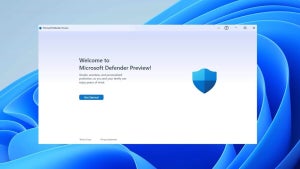News
Watch out, these fake Microsoft Office add-ons are loaded with malware
A fake Microsoft Office add-on hosted on SourceForge was found to spread malware, infecting over 4,600 devices before it was removed.

- April 9, 2025
- Updated: April 9, 2025 at 1:00 PM

Cybercriminals are once again exploiting trusted platforms to spread malware. This time, they leveraged SourceForge, a well-known site for open-source software, to distribute a malicious fake Microsoft Office add-on project. Although the attack was stopped swiftly, thousands of devices were already compromised before detection.
A deceptive Office project on SourceForge
Researchers from Kaspersky uncovered a campaign where attackers uploaded a fake project named officepackage to SourceForge. It posed as a Microsoft Office development tool, mirroring the legitimate Office-Addin-Scripts found on GitHub. The files included in the project appeared genuine but functioned as malware droppers.
Malware aimed at mining crypto and stealing clipboard data
The payload included a cryptocurrency miner and a clipboard jacker, designed to exploit infected devices. The clipboard jacker monitors copied crypto wallet addresses and silently replaces them with the attackers’ own. Meanwhile, the miner uses the system’s resources to generate digital coins, draining performance and potentially increasing energy costs.
SourceForge responds quickly to contain the threat
SourceForge reacted promptly, removing the malicious project as soon as it was flagged. The platform insists that no core system was breached, and all files on the main website undergo regular malware scans. Additional safeguards have been introduced to prevent project sites from linking to suspicious external content or performing stealthy redirects.
Over 4,600 systems infected before takedown
Before the project was removed, more than 4,600 systems had already been infected, most of them located in Russia. This incident highlights the growing sophistication of malware distribution tactics and the importance of verifying the origin and authenticity of downloads, even from trusted platforms.
Latest from Agencias
- The 2025 Hyundai Ioniq 5 XRT Limited: Adventure Meets Electric Elegance
- Is this the end of WhatsApp and Instagram? What we know about the historic change proposed by the U.S.
- Microsoft Defender receives an interesting update: What it means for your security
- Tesla Insurance Premiums Skyrocket Amid Rising Repair Costs
You may also like

The 2025 Hyundai Ioniq 5 XRT Limited: Adventure Meets Electric Elegance
Read more

Is this the end of WhatsApp and Instagram? What we know about the historic change proposed by the U.S.
Read more

Microsoft Defender receives an interesting update: What it means for your security
Read more

Tesla Insurance Premiums Skyrocket Amid Rising Repair Costs
Read more

This alternative to HDMI comes from China and could change everything
Read more

Tesla’s $500 Million Dilemma: Upgrade or Compensate 4 Million Drivers
Read more